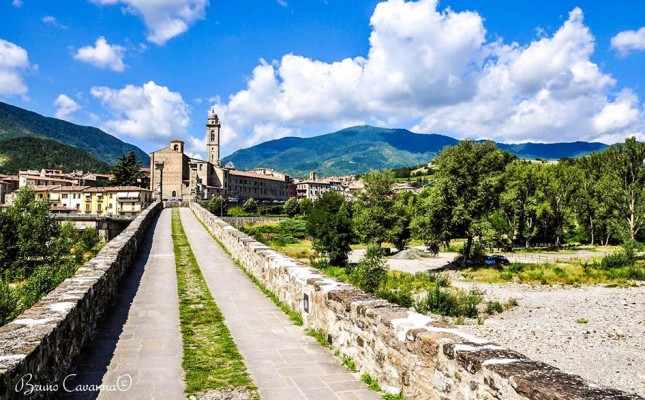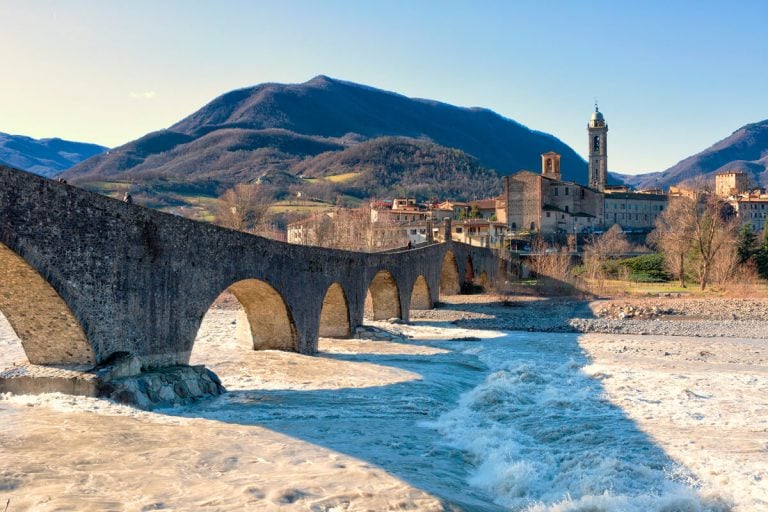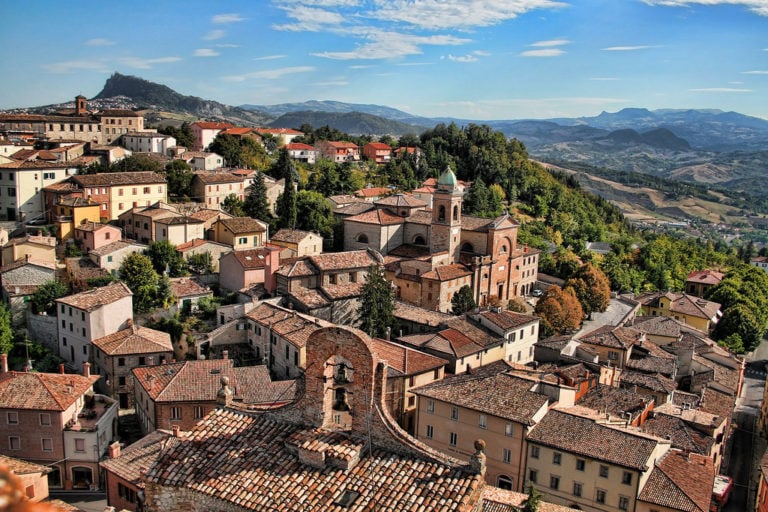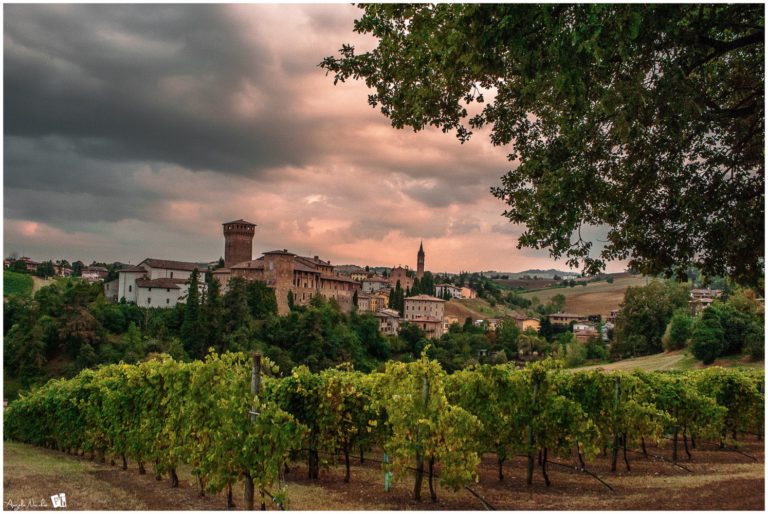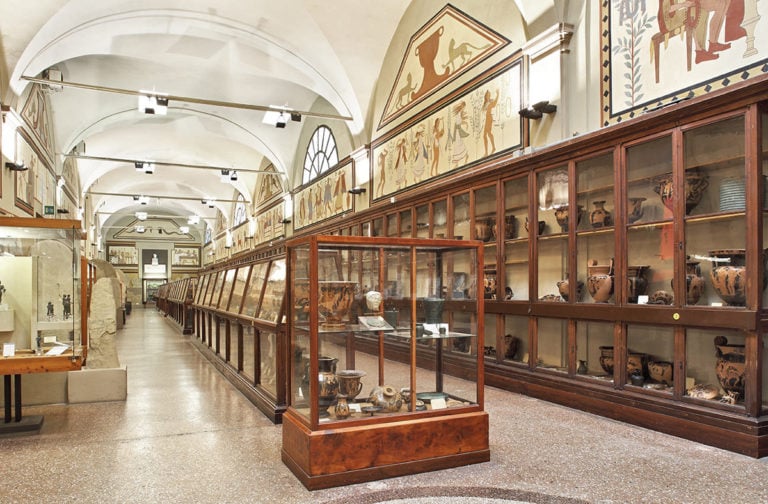The Ponte Gobbo (Hunchback Bridge) – also known as Ponte Vecchio (Old Bridge) or Ponte del Diavolo (Devil’s Bridge) – is an ancient bridge with an irregular profile, which crosses the River Trebbia in a small town called Bobbio, on the Piacenza’s Apennines.
Ponte Gobbo is 273 meters long and it was called Hunchback Bridge for the particular irregular profile with 11 arches unequal to each other and placed at different heights.
There are three pairs of kiosks above the main arches and inside two of these there are the statues of St. Columban and Our Lady of Help.
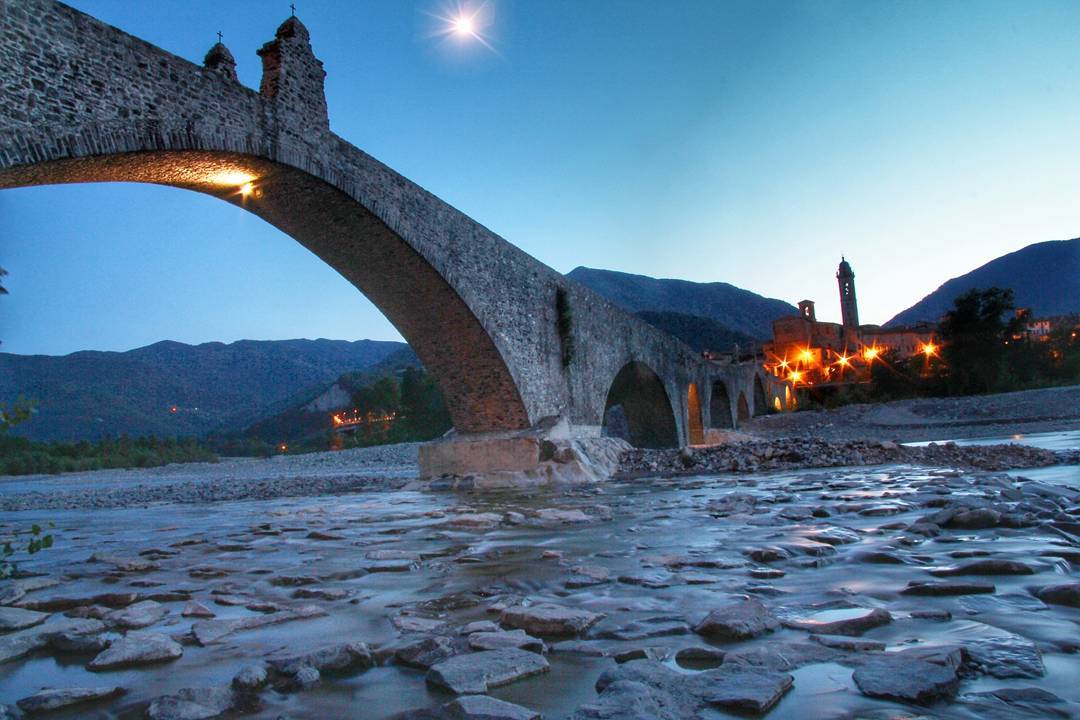
Ponte Gobbo Bobbio | Ph. @ucci__46
The period of construction of this old bridge is not dated, but probably it is from the Roman period and we can assume that arose after the Roman conquest of the previous Celtic-Ligurian village. It underwent numerous alterations in later periods.
There are traces of an older bridge below which can be considered high medieval, before the arrival of St. Columban. The construction above dates from the seventh century by the monks of St. Columban.
In historical archives there is a document dated April 6th 1196 testifying to the maintenance of the bridge.
For the settlement of Bobbio, it was vital to have a secure connection with the various activities on the right bank of the Trebbia river: thermal saline, the Roman baths, the rio furnace Gambado and the access to the Genovese and Lunigiana routes. Due to the torrential character, the Trebbia was sudden and devastating floods with frequent movement of the gravel bed, which makes it difficult to wade especially in the winter months.
Until the sixteenth century, the bridge was composed of a few arches, a large arch to the right bank of the Trebbia with three smaller arches. The river floods over the years have inflicted several wounds to the stone bridge, which was also always patiently rebuilt with substantial amendments to improve the security and robustness.
Around 1590, architects began to stretch towards the left bank, on the master drawing Magnano from Parma, in the seventeenth century, the bridge came to have eleven arches.
For centuries the bridge was the destination of pilgrims and religious processions with blessings by building close to the banks of crosses and votive images (today some of them are still visible).
Author
You may also like
[Emilia Romagna Villages] Bobbio: a town of cinema and legend
by Arturo Castellini /// October 10, 2017
Emilia Romagna Slow | The Abbots Way
by Arturo Castellini /// April 24, 2017
5 awesome bridges to cross around Emilia-Romagna
by Davide Marino /// January 11, 2024

Interested in our newsletter?
Every first of the month, an email (in Italian) with selected contents and upcoming events.
The most beautiful Italian Villages in Emilia-Romagna
by Elisa Mazzini /// October 26, 2017
The “Orange Flag” Villages in Emilia-Romagna
by Arturo Castellini /// December 21, 2017

![[Emilia Romagna Villages] Bobbio: a town of cinema and legend](https://www.travelemiliaromagna.it/wp-content/uploads/2021/06/photo-768x576.jpg)
